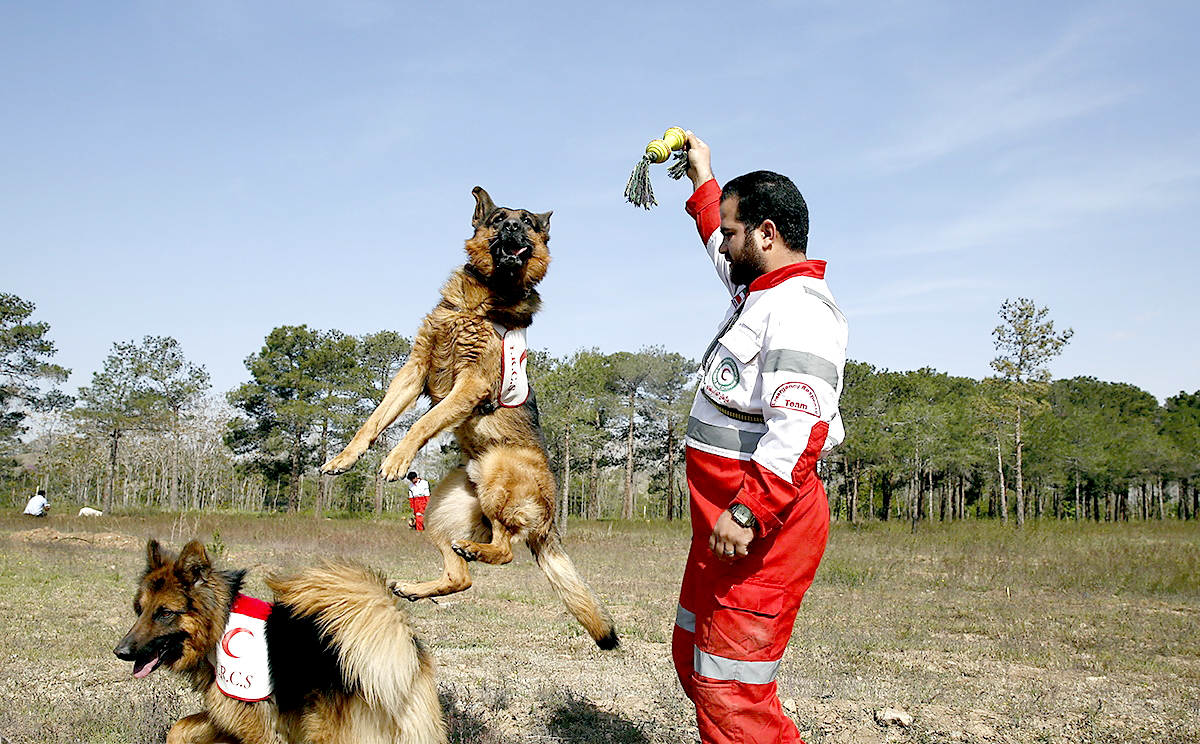The first training center for rescue dogs was established 19 years ago in the country. At the time there were only six trainers and six dogs at the center.
After the devastating earthquake of December 26, 2003 in Bam city, Kerman Province which killed more than 31,000 people (a quarter of its population), authorities began to pay more attention to the need for trained dogs during natural disasters, the Persian language newspaper ‘Iran’ reported.
In the first 24 hours after the quake, German and Austrian Red Cross teams with their rescue and sniffer dog squads saved hundreds of lives as the canines searched for survivors in the rubble left by the 6.6-magnitude quake.
The number of rescue dogs and trainers has gradually increased since then and each year the dogs are trained to make use of their senses, especially smells to detect substances or missing people.
“Recently, more than 70 rescue dogs from different provinces of the country with their 11 Iranian trainers have moved to the center to undergo courses offered by two international trainers from the German Red Cross,” said Esmaeil Heidari, head of the Rescue Dog Center at the Iranian Red Crescent Society (IRCS).
Michael Hoffman, international trainer and also member of the International Committee of the Red Cross and Siggi Hofer, rescue dog trainer from the German Red Cross have conducted training courses at the center since 2007.
“In times of disasters, Iran can provide rescue services through trained staff and the dozens of rescue dogs to other countries in the Middle East that have not established the center yet,” Hoffman said.
“Lack of trained staff at the center is not Iran’s problem alone; in Germany we only have 10 trainers and the others are volunteers who don’t receive any wages for their work. But in Iran there are no volunteer trainers.”
“We provide the dogs with excellent physical and mental stimulation through a series of fun activities. The activities can sharpen obedience skills and improve overall behavior in the dogs,” he added.
The sniffer dogs are trained to find human scent in very unnatural environments, including collapsed structures and areas affected by tornadoes, earthquakes and other disasters. They are also trained to work on unstable surfaces and in small confined spaces.
Earthquake Prone
Iran straddles several major seismic faults, and is prone to frequent earthquakes, many of which have been devastating.
The deadliest was in June 1990 and measured 7.7 on the Richter scale. Around 37,000 people were killed and more than 100,000 injured in the northwestern provinces of Gilan and Zanjan. In August 2012, two quakes in northwestern Iran also claimed the lives of 306 people and injured more than 4,500 others.
According to the Iranian Seismological Center affiliated to the Institute of Geophysics, University of Tehran, last year (ended in March), seven earthquakes (of magnitude 5.0 to 6.0) occurred in the country. In August 2014, a 6.2-magnitude earthquake that rattled Mourmouri city in Ilam Province injured 250 people and damaged 8000 homes to the extent of 10%-80%.


